General Administration of Customs introduces the import and export situation in 2016.
The State Council Press Office held a press conference at 10: 00 a.m. on Friday, January 13th, 2017 in the press room of the State Council Information Office, and invited Huang Songping, spokesman of the General Administration of Customs, to introduce the import and export situation in 2016 and take questions from reporters.
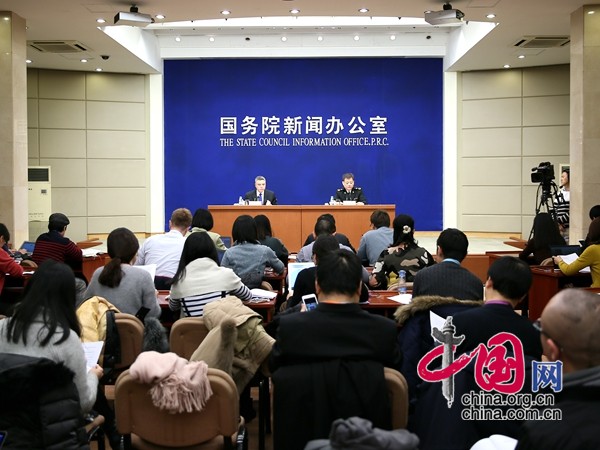
Press conference on the import and export of the State Council in 2016
China wangzongchao
[Moderator Hu Kaihong]Good morning, ladies and gentlemen. Welcome to the press conference of the State Council Information Office. Today, we have invited Mr. Huang Songping, spokesman of the General Administration of Customs. Ask him to introduce the import and export situation in 2016 and answer your questions. Let’s ask Director Huang to introduce the situation first.

Huang Songping, spokesman of the General Administration of Customs, China Net Zongchao
[Huang Songping, spokesman of the General Administration of Customs]Ladies and gentlemen, Happy New Year 2017. Welcome to today’s press conference. It’s a pleasure to meet you again, to brief you on China’s foreign trade import and export in 2016, and then answer your questions. In 2016, the world economy recovered difficultly, and the domestic economy improved steadily. According to customs statistics, in 2016, the total import and export value of goods in China was 24.33 trillion yuan, down 0.9% from 2015. Among them, exports were 13.84 trillion yuan, down 2%; Imports reached 10.49 trillion yuan, up by 0.6%; The trade surplus was 3.35 trillion yuan, narrowing by 9.1%.
The specific situation mainly includes the following aspects:
I. Imports and exports stabilized quarter by quarter, and both achieved positive growth in the fourth quarter. In 2016, China’s import and export showed a trend of low before and high after, and stabilized and improved quarter by quarter. Among them, in the first quarter, China’s import and export, export and import value decreased by 8.2%, 7.9% and 8.6% respectively; In the second quarter, the value of import and export, export and import decreased by 1.1%, 0.8% and 1.5% respectively; In the third quarter, the import and export value increased by 0.8% and 2.3% respectively, while the export value decreased by 0.3%; In the fourth quarter, the value of import and export, export and import increased by 3.8%, 0.3% and 8.7% respectively.
Second, the import and export of general trade increased and its proportion increased. In 2016, China’s general trade import and export was 13.39 trillion yuan, up 0.9%, accounting for 55% of China’s total import and export value, up 1 percentage point from 2015, and the trade pattern structure was optimized.
Third, export growth to some countries along the Belt and Road. In 2016, China’s exports to Pakistan, Russia, Poland, Bangladesh and India increased by 11%, 14.1%, 11.8%, 9% and 6.5% respectively. In the same period, China’s exports to the EU increased by 1.2%, to the United States increased slightly by 0.1%, and to ASEAN decreased by 2%, accounting for 46.7% of China’s total exports.
Fourth, the proportion of private enterprises’ exports continued to maintain the first place. In 2016, the import and export of private enterprises in China was 9.28 trillion yuan, an increase of 2.2%, accounting for 38.1% of China’s total foreign trade. Among them, exports were 6.35 trillion yuan, down 0.2%, accounting for 45.9% of the total export value, and continued to maintain the top position in export share; Imports increased by 8.1%.
Five, mechanical and electrical products, traditional labor-intensive products are still the main export. In 2016, the export of mechanical and electrical products in China was 7.98 trillion yuan, down by 1.9%, accounting for 57.7% of China’s total export value. Among them, the export of medical instruments and instruments increased by 6.1%, and the export of storage batteries increased by 4%. In the same period, the total export of traditional labor-intensive products was 2.88 trillion yuan, down 1.7%, accounting for 20.8% of the total export value. Among them, the export of textiles, toys and plastic products increased.
6. The import volume of bulk commodities such as iron ore, crude oil and copper maintained growth, and the prices of major imported commodities remained at a low level, but the decline narrowed. In 2016, China imported 1.024 billion tons of iron ore, an increase of 7.5%; 381 million tons of crude oil, up by 13.6%; 256 million tons of coal, up by 25.2%; 13.21 million tons of steel, an increase of 3.4%; 4.95 million tons of copper, up 2.9%; Refined oil was 27.84 million tons, down 6.5%. In the same period, China’s import prices generally fell by 2.1%. Among them, the average import price of iron ore decreased by 0.5% year-on-year, crude oil decreased by 18.6%, refined oil decreased by 10.8%, coal decreased by 0.1%, copper decreased by 6%, and steel decreased by 5.5%, which was narrower than that in the first half and the first three quarters.
In July and December, China’s foreign trade export leading index continued to rise. In the fourth quarter of 2016, China’s foreign trade export leading index rose for three consecutive months, reaching 37.4 in December, up 0.5, indicating that China’s export pressure is expected to ease in the first quarter of 2017. Among them, according to the data of online questionnaire survey, China’s export managers’ index dropped by 0.6 to 39.4 in that month; The index of new export orders rose by 0.6 to 41.9, the manager confidence index fell by 2 to 43.5, and the comprehensive cost index of enterprises fell by 1.6 to 23.9.
At present, there are still some difficulties in China’s foreign trade development, which are as follows: the import and export of foreign-invested enterprises and state-owned enterprises in China have decreased by 2.2% and 5.6% respectively; The import and export of processing trade decreased by 4.9%.
Faced with the severe and complicated international trade situation, the Customs will continue to adhere to the general tone of striving for progress while maintaining stability, resolutely implement various policies and measures to stabilize foreign trade growth, comprehensively deepen reforms around building a new open economic system, solidly promote various customs reforms to take root, and strive to promote foreign trade to stabilize and improve, so as to better serve the overall economic and social development of the country.
Next, I would like to answer your questions.
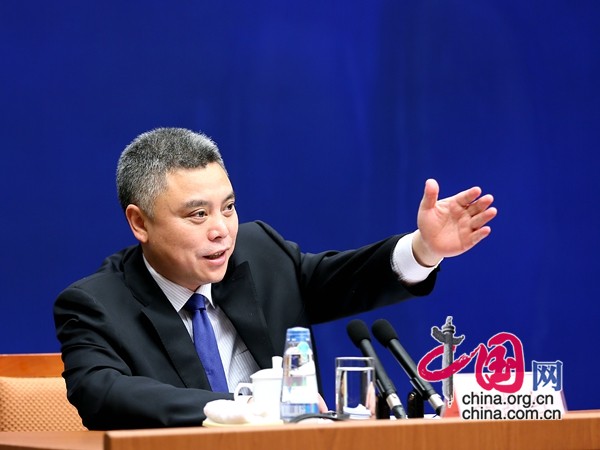
Hu Kaihong, spokesperson of the State Council Information Office, invited reporters to ask questions.
China wangzongchao
【Hu kaihong】Thank you, Director Huang. Let’s start asking questions.
【CCTV reporter】Hello, Director Huang. In 2016, the international economy was in a downturn, and the overall environment of China’s foreign trade was very severe. How do you evaluate the overall performance of China’s foreign trade in 2016? In addition, the latest customs data shows that since the fourth quarter of 2016, China’s foreign trade has obviously improved. What are the main reasons? Director Huang, please give us a detailed explanation. thank you
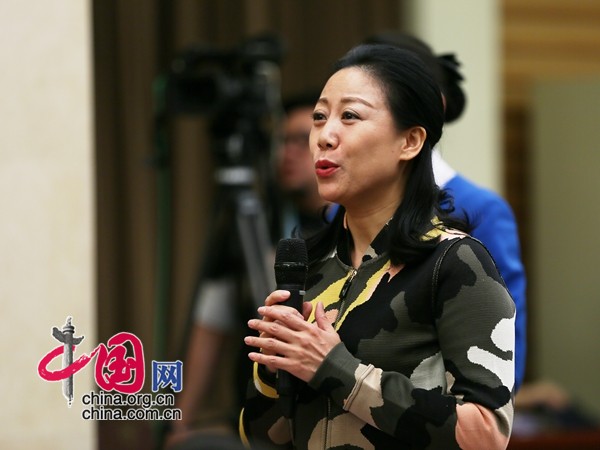
CCTV reporter asked questions.
China wangzongchao
【Huang Songping】Thank you for your question. In 2016, the global economy is still in a period of deep adjustment after the international financial crisis, the economic recovery is weak, the international market demand is weak, the unstable and uncertain factors facing China’s foreign trade development are obviously increasing, the downward pressure is increasing, and the overall situation is complicated and severe. With the gradual emergence of the effect of national policies and measures to promote the stabilization of foreign trade, the import and export value of China’s foreign trade decreased significantly in the first quarter, stabilized in the second quarter, and continued to achieve positive growth in the third and fourth quarters. The whole year showed a trend of low before, high after, and stable and good. This is our overall view on China’s import and export of goods in 2016.
Among them, China’s foreign trade increased slightly in the fourth quarter, and we believe that it benefited from the gradual implementation of a series of policies and measures to promote foreign trade to stabilize and improve. Since 2014, the State Council has successively issued more than 10 documents on the steady growth of foreign trade, and relevant departments have continuously improved relevant supporting measures, which have provided a good policy environment for the stable and high-quality development of China’s foreign trade. For example, in September last year, the Ministry of Commerce and the General Administration of Customs jointly issued an announcement to cancel the approval of processing trade business nationwide. In November, the Ministry of Finance and the State Administration of Taxation jointly issued an announcement to increase the export tax rebate rate of important products such as electromechanical products and refined oil products to 17%. These policies and measures are very specific, highly operable and targeted, and have played a positive role in promoting the steady growth of foreign trade.
Secondly, there are signs of improvement in the external environment, and the index of new orders of export enterprises has rebounded significantly. Overall, in 2016, the world economy continued to slump and global trade shrank, but some indicators were slowly improving. For example, the manufacturing managers’ index, which reflects the degree of economic prosperity, shows that the indicators of the United States, the European Union and Japan all remained above threshold in the fourth quarter and reached a new stage in December. In emerging markets, Russian and Indian countries also remain above threshold. The Baltic dry bulk index, which reflects the activity of global trade, also rebounded from the historical low in early February 2016. On November 11th, it rose to 1045, breaking through 1000 points for the first time in 16 consecutive months. At the same time, according to our monthly online questionnaire survey data of 3000 foreign trade export enterprises, since June, the index of new orders of export enterprises has obviously rebounded. It rose to 41.9 in December, the highest level since March 2015, which confirmed that the external market did show signs of slow improvement.
Third, the domestic economy’s "slowing down, stabilizing and improving" has driven the continuous increase in bulk commodity imports. The slowdown in the decline in import prices has simultaneously promoted the increase in import value. In 2016, under the influence of supply-side structural reform and moderately expanding aggregate demand, the domestic economy maintained a reasonable range, showing a steady and progressive development trend, which led to an increase in the import volume of some bulk commodities. For example, as just reported, China’s imports of iron ore, crude oil, copper and other commodities have maintained growth. At the same time, the decline in import prices continued to narrow. In 2016, China’s import price fell by 2.1% overall, which was 3.2 percentage points lower than that in the previous three quarters. The average year-on-year decline of iron ore imports was 8.1 percentage points lower than that in the previous three quarters, crude oil was 7.3 percentage points lower, coal was 14.7 percentage points lower, and copper was 5.9 percentage points lower. Although the import price is still the main factor dragging down the growth of China’s import value, the narrowing of the decline in import prices has also helped the annual import growth rate to surface.
The above three points are the main driving factors for the slight growth of China’s foreign trade in the fourth quarter. Thank you.
[Tass news agency reporter]I would like to ask you how to evaluate the Sino-Russian economic and trade cooperation in 2016 last year, and what are your expectations for this year’s Sino-Russian economic and trade cooperation?
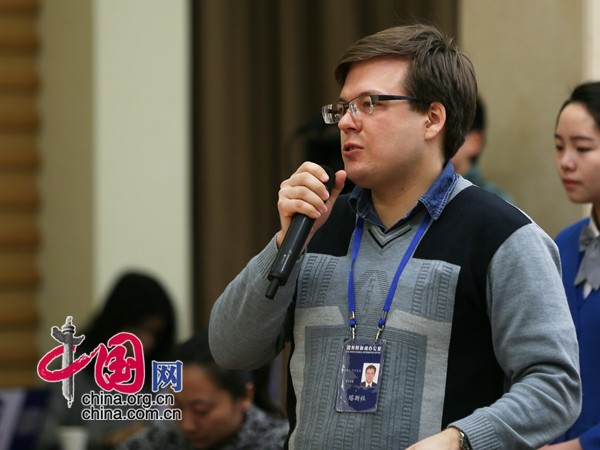
Tass news agency reporter asked China Net Zongchao
[Huang Songping]Thank you for your question. Let me introduce the Sino-Russian trade first. In 2016, the total value of bilateral trade between China and Russia was 459.15 billion yuan, an increase of 8.7%. Among them, exports to Russia reached 246.32 billion yuan, an increase of 14.1%. Imports from Russia reached 212.83 billion yuan, up 3.1%, and the trade surplus reached 33.49 billion yuan, up 2.5 times. In recent years, under the guidance of the heads of state of China and Russia, the comprehensive strategic partnership between China and Russia has been deepening, and the two countries have a high degree of political mutual trust, extensive economic and trade cooperation and close cultural exchanges. At present, Sino-Russian relations are in the best period in history. The two countries are comprehensively promoting the docking of the two development strategies of the Silk Road Economic Belt and the Eurasian Economic Union, and jointly promoting the construction of the "China-Mongolia-Russia Economic Corridor". The cooperation between the two countries has entered a new stage with great potential and broader prospects.
Thank you.
[Reporter of China Radio International]What do you think of China’s foreign trade trend in 2017? Thank you.
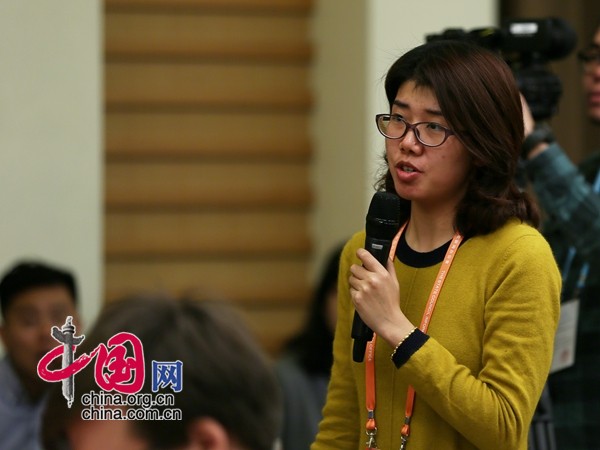
A reporter from China Radio International asked questions.
China wangzongchao
[Huang Songping]Thank you for your question. In 2016, China’s foreign trade showed a stable and positive trend, and it was not easy to achieve such results. In 2017, the international environment is still severe and complicated, and the downward pressure on the domestic economy is still relatively large. There are still many uncertain factors affecting the development of China’s foreign trade, and the foundation for supporting the continued improvement of foreign trade is still not solid.
First, the current world economy is facing many new challenges, and the downturn is still the main theme of the world economy. The latest World Economic Outlook report of the International Monetary Fund predicts that the global economic growth rate will be 3.4% in 2017, and the latest forecast of the OECD is 3.2%. It is a consensus that the global economy will still operate at a low level. The latest trade outlook report of the World Trade Organization lowered the growth forecast of global trade in goods to 1.8%-3.1% in 2017. This is the first time that the WTO has put forward an interval forecast, which means that global trade will still be difficult to pick up in 2017 and uncertainties will increase. In such a big environment, China’s foreign trade can hardly be immune to it.
Second, China’s own reform has entered the deep water area, and the pressure of foreign trade structure transformation is great. 2017 is an important year for China to implement the "Thirteenth Five-Year Plan" and the deepening of supply-side structural reforms. Many structural adjustments have entered a critical period. On the one hand, with the rising comprehensive production cost, the competitive advantage of traditional foreign trade continues to weaken. On the other hand, the imbalance of regional development in China has not yet been solved. The industrial chain supporting in the central and western regions is still not perfect, the logistics cost is high, and the efforts to undertake the eastern factor cost-based industries and order transfer are not strong. The data shows that in the first 10 months of 2016, the market share of China’s labor-intensive products in the EU decreased by 1.8 percentage points compared with the same period of 2015, the share in the United States decreased by 1.2 percentage points, and the share in Japan decreased by 2.1 percentage points, while the market share of similar products in some Southeast Asian countries in Europe, America and Japan increased in the same period. In addition, at present, China is actively cultivating new advantages in foreign trade competition, and developed economies are vigorously promoting the return of manufacturing industries, which poses a challenge for China to introduce high-quality foreign capital. Higher-quality foreign trade puts forward more urgent needs for innovation and development and independent formation of new technological advantages.
Third, the process of globalization is blocked, and trade protectionism restricts China’s export expansion. According to the report released by the World Trade Organization in June 2016, from October 2015 to May 2016, the G20 economies implemented 145 new trade restrictive measures, with an average of more than 20 new measures introduced every month. The average number of new measures per month is the highest since the World Trade Organization began to monitor trade restrictive measures in 2009. Under the background of weak economic growth, implementing trade protection, setting up trade barriers and interfering with normal trade by anti-dumping have become important means for countries concerned to seize international market share. The trend of anti-globalization has become increasingly obvious, and China has become the biggest victim of this trend. According to the latest data from the Ministry of Commerce, in 2016, China encountered 119 trade remedy investigation cases initiated by 27 countries and regions, involving a total amount of 14.34 billion US dollars. The number of cases and the amount involved increased by 36.8% and 76% respectively. In 2017, the global political situation is undergoing tremendous changes, such as the Brexit, the general elections of major European countries, the inauguration of the new US president, the presidential election of South Korea and other major events, which will bring variables to the existing policy direction or aggravate the global trade protectionism.
On the whole, we believe that the internal and external environment of China’s foreign trade in 2017 is complicated, and the difficulties it faces are not short-term. However, after years of accumulation, China’s economy and foreign trade have good resilience, sufficient potential and great room for manoeuvre. No matter how the external market fluctuates, we are confident to cope. In the field of foreign trade in 2017, as long as we grasp the general tone of the work of "striving for progress while maintaining stability", consolidate and implement the series of policies and measures of "stabilizing growth and restructuring", and strive to make various reforms benefit enterprises, foreign trade will certainly achieve results in improving quality, increasing efficiency and stabilizing development.
Thank you.
[China News Service reporter]I’d like to ask you what progress China’s foreign trade has made in improving quality and efficiency in 2016, and promoting excellence. Thank you.
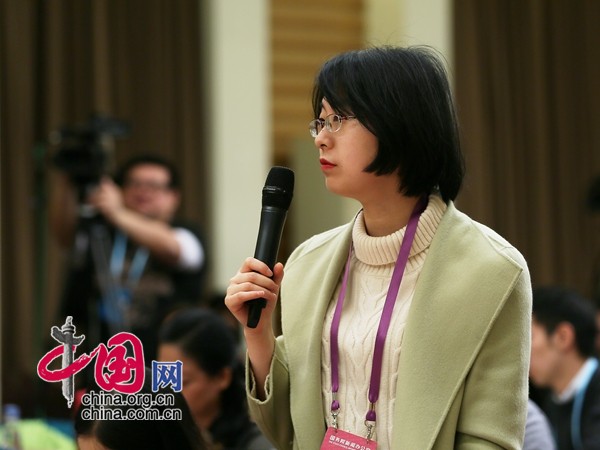
China News Service reporter asked questions.
China wangzongchao
[Huang Songping]Secondly, good progress has been made in product excellence. In terms of exports, China’s exports of traditional advantageous products continued to grow in 2016, among which the exports of textiles, plastic products and toys increased by 1.9%, 0.5% and 24.9% respectively, which still maintained a good competitive advantage. At the same time, thanks to China’s abundant capital, perfect industrial system and strong manufacturing capacity, Chinese enterprises also promoted the export of equipment manufacturing and high value-added products in speeding up going abroad and promoting international capacity cooperation. The export of some mechanical and electrical products and equipment manufacturing products also maintained a good momentum, such as the export of motors and generators increased by 5%, the export of medical instruments increased by 6.1%, the export of auto parts increased by 3.5%, and the export of textile machinery increased by 3%.
From the perspective of imports, China’s imports of crude oil, copper and other commodities continued to grow in 2016, which also showed that China’s domestic economy was running smoothly and demand rebounded. At the same time, the policy effect of expanding imports and optimizing the import structure appeared, and the import of some advanced technologies, key parts and important equipment and other high-tech products increased rapidly. In 2016, the import of mechanical and electrical products in China increased by 1.9%, among which the import of turbojet engines increased by 26.8%, the ship increased by 26.6%, and the automatic control instruments and appliances for measurement, detection and analysis increased by 10.7%.
In the future, we need to face the complicated and changeable international and domestic economic situation and import and export environment more actively, strive to build a new open economic system, adhere to independent innovation, pay more attention to cultivating new advantages in foreign trade competition with technology, brand, quality and service as the core, continuously improve the quality and efficiency of foreign trade development, create a higher level of open economy, and fully realize the transformation from "big entry and big exit" to "excellent entry and excellent exit".
Thank you.
[Reporter of American International Market News Agency]As you just said, protectionism is on the rise in the world, and anti-globalization forces are also increasing. In the face of Trump’s foreign trade policy after he took office as president of the United States, what countermeasures should we have to deal with these forces that are not conducive to our trade?
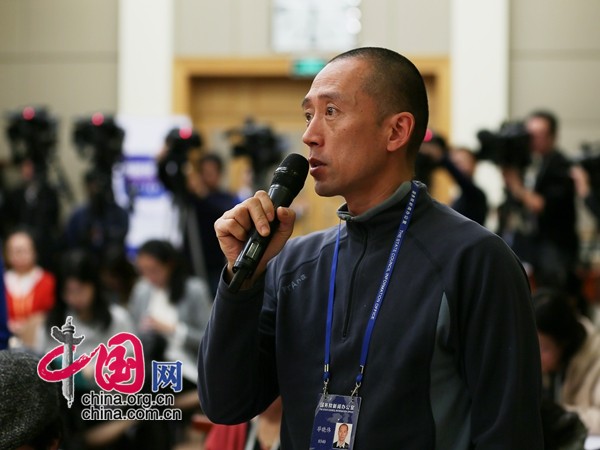
A reporter from American International Market News Agency asked questions.
China wangzongchao
[Huang Songping]Thank you for your question. Nowadays, the world economy is in a period of deep adjustment after the international financial crisis. The trend of major economies and macro-policy orientation are divided, the development of global trade is in a downturn, the tendency of anti-globalization is on the rise, and trade protectionism is heating up, which greatly increases the uncertainty of the world economy.
According to the data of the Ministry of Commerce, in 2016, China encountered 119 trade remedy investigation cases initiated by 27 countries and regions, involving a total amount of US$ 14.34 billion. The number of cases and the amount involved increased by 36.8% and 76% respectively, and the number of trade remedy cases in China reached an all-time high. The tendency of politicization and extreme measures of trade friction is obvious, and the final tax rate is generally high.
Faced with the potential impact of trade protectionism in developed economies on themselves and even the world economy, it is necessary for the international community to jointly take measures to deal with it. As a responsible big country and the second largest economy in the world, China will make efforts to overcome the uncertainty of the world economy, continue to promote economic globalization and promote the sustainable development of the world economy on the basis of resolutely opposing trade protectionism.
Many journalists also expressed concern about Sino-US economic and trade relations. We believe that China and the United States have complementary economies and mutually beneficial trade. In 2016, the United States is China’s second largest trading partner and largest export market. We hope that China and the United States, the two largest economies in the world, will have better development prospects in economic and trade cooperation in the future. We will pay close attention to Trump’s foreign trade policy after he became president of the United States. Thank you.
[Japan Asahi TV reporter]Director Huang, please tell us about the trade between China and Japan last year. What do you think of the trend of Sino-Japanese trade this year?
[Huang Songping]Sino-Japanese trade, in 2016, the total import and export value of China’s bilateral trade with Japan was 1.82 trillion yuan, an increase of 5%, accounting for 7.5% of China’s total foreign trade import and export value. Japan is China’s fifth largest trading partner, with exports to Japan reaching 852.75 billion yuan, up 1.3%, and imports from Japan reaching 962.75 billion yuan, up 8.5%. The trade deficit with Japan was 110 billion yuan, an increase of 1.4 times. In the future, we sincerely hope that the economic and trade cooperation between China and Japan will develop steadily and truly achieve mutual benefit and win-win results. Thank you.
[Reporter of China Review Society]I would like to ask Director Huang to introduce the import and export trade situation of Chinese mainland and Taiwan Province in 2016, and how do you predict the trade situation with Taiwan Province in 2017? Thank you.
[Huang Songping]According to our statistics, the total value of cross-strait bilateral trade in 2016 was 1.19 trillion yuan, up 1.6% year-on-year, accounting for 4.9% of the total foreign trade of the mainland in the same period. Taiwan Province is the seventh largest trading partner of the mainland, of which mainland exports to Taiwan reached 266.43 billion yuan, down 4.3%, while imports from Taiwan reached 920.4 billion yuan, up 3.4%, with a trade deficit of 653.97 billion yuan, up 6.9%. It mainly exports integrated circuits, steel products, automatic data processing equipment, etc. to Taiwan, and imports from Taiwan mainly include integrated circuits, liquid crystal display panels, primary plastic and so on.
As for the development of trade with Taiwan, we believe that the two sides of the strait should eliminate unfavorable factors and increase favorable factors to promote the stable development of cross-strait trade. Thank you.
[Hu Kaihong]Today’s press conference is over. Thank you, Director Huang, and thank you all.